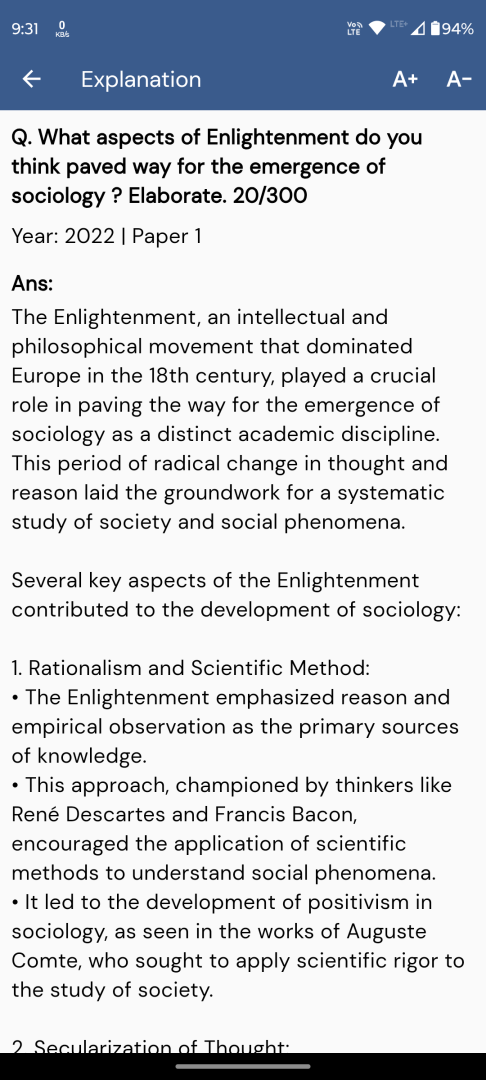Q. Identify different forms of inequalities associated with agrarian social structure in India.
UPSC Sociology 2024 Paper 2
Model Answer:
Inequalities in agrarian social structure
The agrarian social structure in India is marked by deep-rooted inequalities that stem from historical, socio-economic, and cultural factors. These inequalities manifest in various forms, affecting different segments of the rural population.
Caste-based Inequalities: The caste system plays a crucial role in agrarian relations. Lower castes, particularly Dalits, often have limited access to land ownership and resources. M.N. Srinivas highlighted how caste hierarchies influence social dynamics in villages. For example, in many regions, upper-caste landlords own vast tracts of land, while lower castes work as landless laborers.
Class-based Inequalities: Socio-economic class divisions lead to disparities between wealthy landowners and poor peasants. Andre Béteille’s studies on Tanjore village illustrate how economic class intersects with caste to create layered inequalities. Rich farmers can afford better technology and inputs, increasing productivity, while small farmers struggle to sustain themselves.
Land Ownership Inequalities: Land distribution in India is highly skewed. The Zamindari system historically concentrated land in the hands of a few. Despite land reforms, large landholdings persist, and marginal farmers own very little land. This affects their livelihood and bargaining power.
Gender-based Inequalities: Women in rural India face discrimination in land rights and labor. They contribute significantly to agriculture but rarely own land. Leela Dube emphasized that patriarchal norms limit women’s access to resources, impacting their social and economic status.
Regional Inequalities: Agricultural development is uneven across regions. States like Punjab and Haryana have advanced due to better infrastructure, while others lag behind. This disparity affects income levels and standards of living among farmers.
Access to Credit and Resources: Small and marginal farmers often lack access to institutional credit, relying on moneylenders who charge high interest rates. This perpetuates a cycle of debt. G.S. Ghurye pointed out that social networks influence access to resources, favoring the privileged.
Exploitation of Agricultural Laborers: Landless laborers face low wages, job insecurity, and poor working conditions. The absence of strong labor laws in rural areas exacerbates their vulnerability.
Conclusion: Thus, the agrarian social structure in India is characterized by multiple, overlapping inequalities that hinder equitable development.





